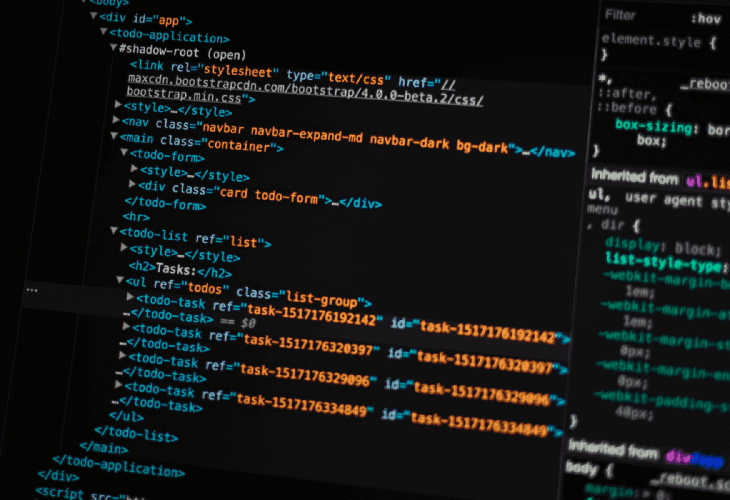HTML stands for HyperText Markup Language. It is the primary markup language used to write (code) web pages and other information that can be read and displayed by a web browser.
What Is HTML? – What is a Markup Language?
A markup language is in essence a system of purposeful annotations placed around the text and content of a document, to assist in communicating or enhancing its meaning.
The concept and terminology “markup language”, originates from the traditional “marking up” of paper manuscripts, essays, test papers etc. HyperText is the core language underlying and defining the structure of the World Wide Web. It is basically text which can be read and displayed on a computer device (PC or laptop monitor, tablet, mobile phone etc.). Hyper Text contains references (hyperlinks) which the user can use to instantly navigate to other documents on the Web.

Thus, HTML consists of HyperText, contained within and annotated by a system of mark ups designed to be read and interpreted by the user’s browser.
Every website on the web contains HTML, whether it’s Wikipedia, Facebook, or a blog site about buying and selling digital services online, like whichfreelancer.walshsamuel.com.
What Is HTML? – HTML Elements and Tags
HTML is written in the form of HTML Elements which appear as tags enclosed in angled brackets (e.g. <html>), all of which separate and enclose the web page content (HyperText etc.).
The purpose of a web browser such as Apple Safari or Mozilla Firefox, is to read and interpret HTML documents. A web browser will translate and display HTML documents as visible and/or audible web pages. A web browser will not display the HTML tags or markup of a HTML document, but only the content which is intended for the user to see. The HTML is used by the web browser to define and properly display the structure of the content.
To read more on the subject, we have a post dedicated to the structure of HTML.

Every website which you view through a web browser, is built upon a foundation of building blocks comprising HTML elements. HTML enables images, objects, lists, forms, video and a whole host of other interactive media to be embedded and communicated across web pages on the internet. It also facilitates web designers and developers to utilise other languages on their web pages.
Looking for all the details? – We have an Index of HTML Elements and Tags, which is a great resource if you’d like to get more in-depth with HTML.
Certain components of a webpage might include scripts written in php or Javascript for example. These languages will alter or enhance the behaviour of web pages to give the end user a more enjoyable and interactive experience.
What Is HTML? – The difference between HTML and CSS
The primary difference between HTML and CSS is that the purpose of HTML is to describe and define the structure of a web page, whereas the purpose of CSS is to define the layout and presentation of a web page.
What is HTML5?
So what is HTML5? Over the years since the Web’s inception, there have been multiple efforts to update and standardise the HTML language. Each successive version has served to be an improvement over the last, and at the time of writing the most recent version is HTML5.
As with most current web browsers and languages, adoption of the HTML5 language is not yet comprehensive. Some web browsers lag behind and don’t yet accommodate some of the most recent additional features to HTML5.
What Is HTML? – Want to read more about HTML and web languages?
HTML typically works alongside CSS, php, Javascript and other web languages. The purpose of all of these it to build great websites and multimedia content for our use and enjoyment across the Web. If you’re interested in building a website of your own, whether for a blog, an ecommerce site or something else – then we’d recommend a visit to our posts on Website Development.
